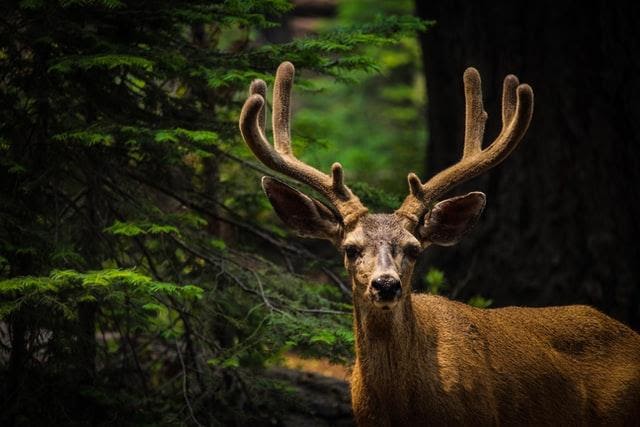Are you going free range hunting in Texas for mule deer for the very first time? If you’re new to hunting, but want to return with tales of successfully hunting a mule deer, our valuable tips can help you. But first, what’s the difference between high fence and free range hunting?
High fence hunting involves hunting for game in a secured area, whereas free ranging range hunting involves roaming freely in the forest. The latter is the real deal! In free range hunting, you’re poaching and waiting it out for the game. Although it’s harder, it gives you a bit more realistic experience in of what it’s like hunting in the wild. Now, let’s get to the tips.
Develop a Scouting List
You need to prepare for your hunt using a topography map of the area and Google Earth. Use them to select the top twelve spots you want to explore before you start hunting. Determining the areas you want to explore beforehand saves you time on the day you’re supposed to hunt for mule deer.
You’ll be more focused on the day of the hunt instead of just hunting in the dark, trying to determine where you need to travel next. You also need to read up on the habits of mule deer. Here’s a tip: Mule deer are habitual creatures, so if you see them do the same thing two times, you’ll get them in no time.
Glassing Mule Deer
When you’re looking for a vantage point, look for shade. Although mule deer prefer shade, continue glassing each possible location. Consider locations you think they’ll spend most of their time in as you figure out when and where to glass. Their habitat will tell you about their sleep-wake cycle.
Most of them live on slopes facing east and will sleep earlier than the deer living on slopes facing the west. Moreover, deer that live on slopes facing east wake up earlier than the deer living on slopes facing the west.
Some hunters develop the habit of searching for red-colored mule deer in their summer coats. Doing so costs them their trophy mule deer, as they tend to get their grey-colored, winter coats quickly. Get into the glassing stance earlier.
We recommend perching in a vantage point before the sun peaks to avoid being seen. You can relax and prepare yourself to spot a mule deer. You need to mentally prepare yourself to glass the entire day. Most hunters prefer to glass or hunt in the early morning and evenings since deer tend to move to different places throughout the day to find new places to sleep as the shade changes. In the evening, you can glass, but stop when you can no longer see anything.
Make the Stalk
When you see your mule deer, get within 200 yards of it, which is easy when you’re hunting with a rifle. If you’re hunting for mule deer with a bow and arrow, you need to close the gap. Here’s a tip: When you spot your target, wait until the deer moves into a position that provides you with the highest stalk percentage. Another thing we want you to do is to find landmarks before you start stalking. Next, learn and memorize the terrain the where the deer is can be located foundby heart.
The terrain will appear different when you’re in the same area as the animal compared to when you glassed the animal. Thanks to technology, you can use your phone to take a high-quality picture of the terrain you’re stalking.
You can use the pictures as a reference in the event you lose sight of your target. Although you’re looking for a mule deer, you might find other potential game as well, including livestock. You should also look on the opposite hillside.
If you’re going with a friend, one of you is the hunter, and the other is the helper. The helper stays behind and uses hand signals to guide the hunter. When the animal isn’t traveling or is bedded in an ordinary environment where everything appears alike, this is where the helper-hunter duo becomes the most effective strategy to use.
Avoid Ears, Nose, and Eyes
You have a better chance of catching that mule deer if you go undetected. This means you need to be extremely discreet when approaching them. You need to avoid them sensing your presence by ensuring you don’t make sounds that would cause them to smell your scent, see you, and hear you. Although this looks heard, several hunters do it expertly every hunting season. You can hide from their gaze by wearing clothes with camouflage patterns.
Still, the most effective way to ensure you aren’t caught is to practice staying out of sight. In the eventWhen you need to sneak past other mule deer to get close to your target, move when their heads are down. Additionally, take advantage of the terrain, using it to hide from the mule deer. Here’s a tip: you can remove your boots and stalk in moccasins or socks to reduce the noise level and ensure you wear clothes that don’t make a lot of noise.
As for the smell, that’s one of these senses that you can never trick. Instead of going after a big target at the start, practice your ninja skills by stalking smaller game. When you get close to them, you need to practice going back. This will either cause them to see you and help you learn where you went wrong or give you the confidence to take your shot.
Observe the Weather and the Moon Phases
Mule deer love to come out of hiding during overcast weather conditions with light rain. Seasonal thundershowers are one of the best times to go out to hunt for mule deer. When it stops pouring, the mule deer go to open areas to eat vegetation soaked with water while the sun hides behind the clouds. If the weather is cool, it’ll be an all-day hunting trip. You also need to observe the moon phases using phone apps and online resources.
The moon phases tell you the ideal days you need to be out hunting for mule deer. Even if the day isn’t ideal, you can still go out hunting. The changing moon phases influence the patterns of animals. For instance, mule deer that come to eat under the moonlight the night before tend to feed in the middle of the day the next day. If you’re going free range hunting, observe what the animals are up to. For instance, if the cows are staying in the shade, chances of the mule deer doing the same are also high.
Pack Up! It’s Time to Go Mule Deer Hunting
With these hunting tips, you’re ready to hunt for free range mule deer hunting. You can train beforehand by hunting with an experienced hunter during the off-season. The more you hunt, the better you’ll get. It takes practice and a lot of mistakes to become an expert hunter.
If you don’t catch a mule deer on your first hunt, don’t beat yourself up over it. Employ all these tips into your hunt and do your best in hunting a mule deer and going home with a trophy. Just remember to have fun, as hunting is a once in a lifetime experience, one that you’ll grow to love over time.
Author Bio
Desert Safaris, LLC established in 1994 in San Antonio, Texas. They specialize in free range big game hunting such as aoudad sheep, desert mule deer, elk, pronghorn antelope, and several exotic animals in Texas, Old Mexico, and New Mexico.
Read Also : Which Deer Fence Should You Buy? A Guide



































































